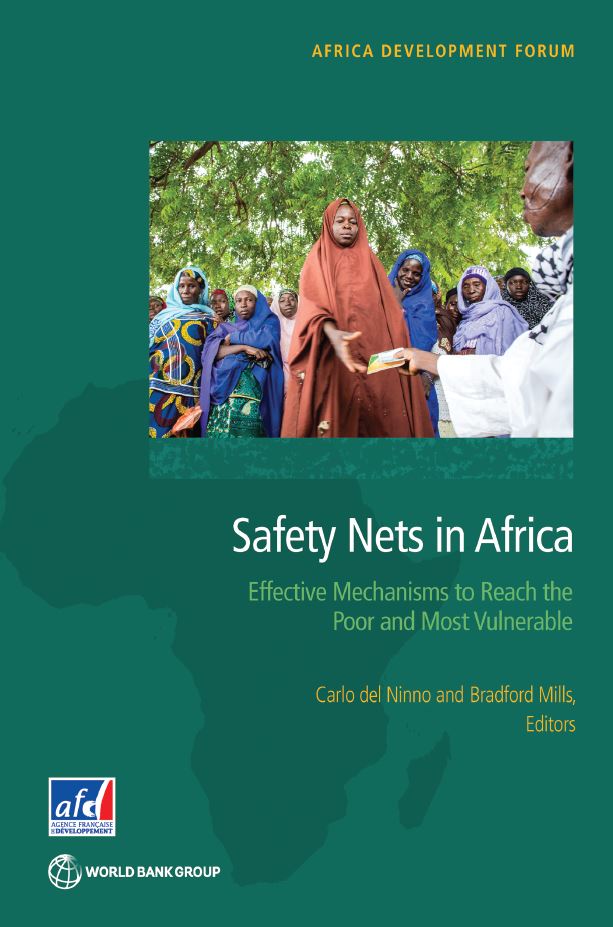Search results
Population and natural resources - Proceedings of the 6th AFD-EUDN Conference, 2008
The theme of the environment and its management in view of the sustainability of living standards has today taken on paramount importance. This renewed interest has been spurred by a series of recent...
Publication
Published on

Climate Change Adaptation in Cities: the conditions for success
For cities to protect themselves against climate change, strong political commitment is of course necessary. But just this is not enough: A panoply of institutional, strategic and social factors is al...
Publication
Published on
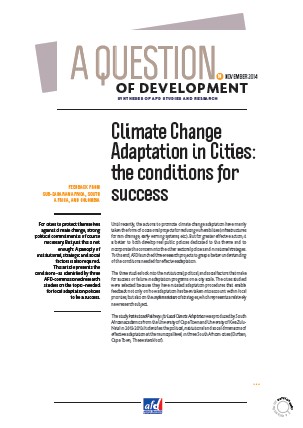
Development Challenges in Latin America
Despite remarkable economic dynamism and poverty reduction over the past decade, Latin America must still overcome many socioeconomic challenges to achieve sustainable development. Against a backdrop...
Publication
Published on
Integrating Marginalized Neighborhoods into Cities: Tomorrow‘s Challenge
Urban growth is spreading mainly in the cities of the South, and the populations of marginalized neighborhoods are expected to double and reach 2 billion in 2030. It is unrealistic to imagine a future...
Publication
Published on
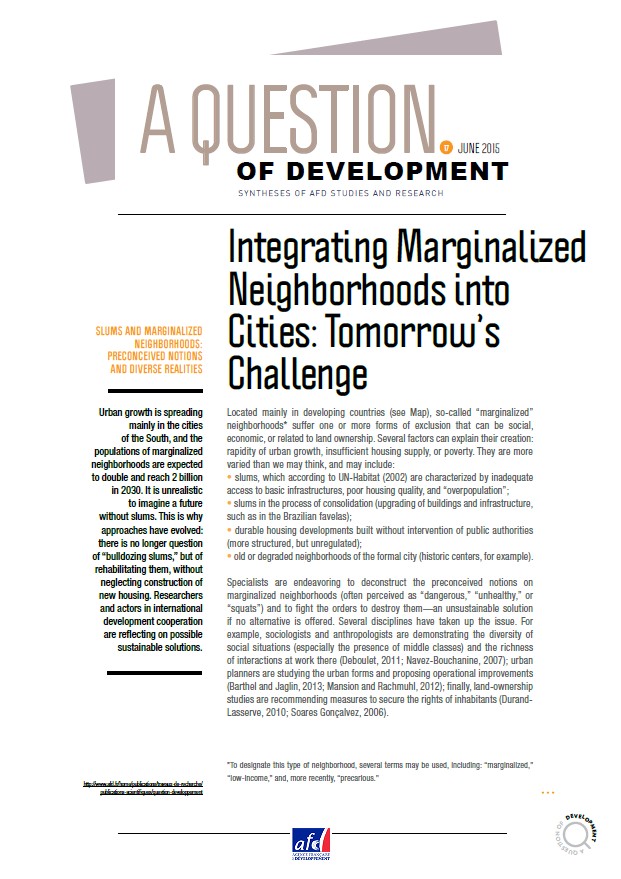
The agrarian question in South Africa
The end of apartheid and Nelson Mandela’s election as President of the Republic turned a page in the history of South Africa. In 1994, some 60,000 (white) farmers held around 87 million hectares of la...
Publication
Published on
Niger
Located in the heart of the Sahel, Niger is one of the poorest countries in the world. Landlocked and subject to extreme weather, the country currently faces the challenges of high population growth a...
Regions and countries
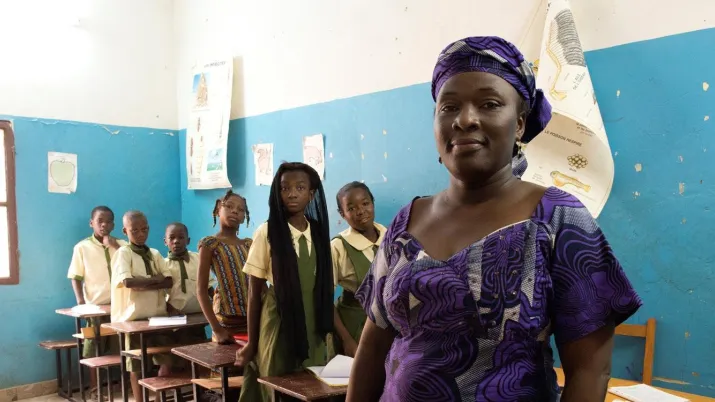
Securing pastoral mobility in Sahel
Pastoralism has long been regarded as archaic, but recent research shows that pastoral systems can effectively exploit the characteristic instability of dryland ecosystems and make productive use of t...
Publication
Published on
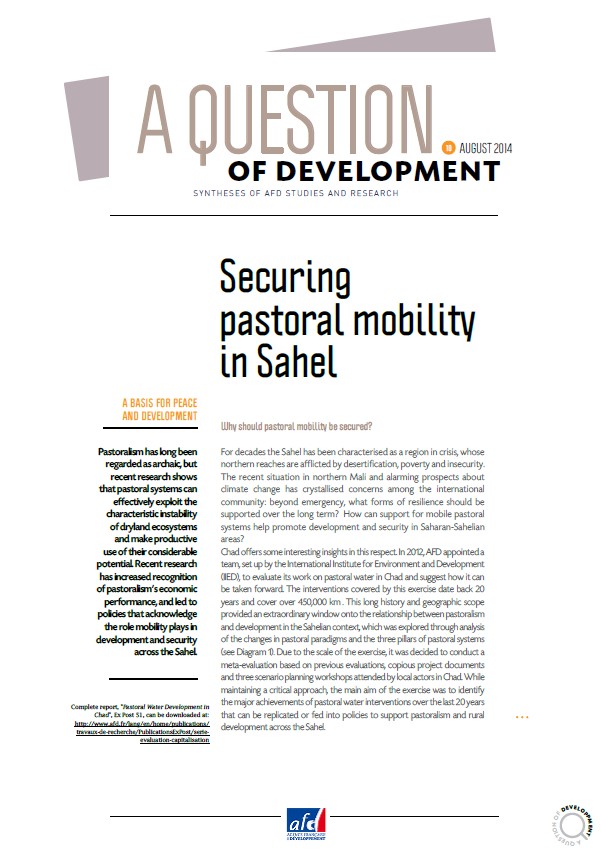
Agriculture, Forests and Climate Change: Can Labelling Play a Part?
In the 2009 summit in Copenhagen, the international community agreed to mitigate climate change by assuring that global temperature will not increase more than 2°C between the pre-industrial period (1...
Publication
Published on
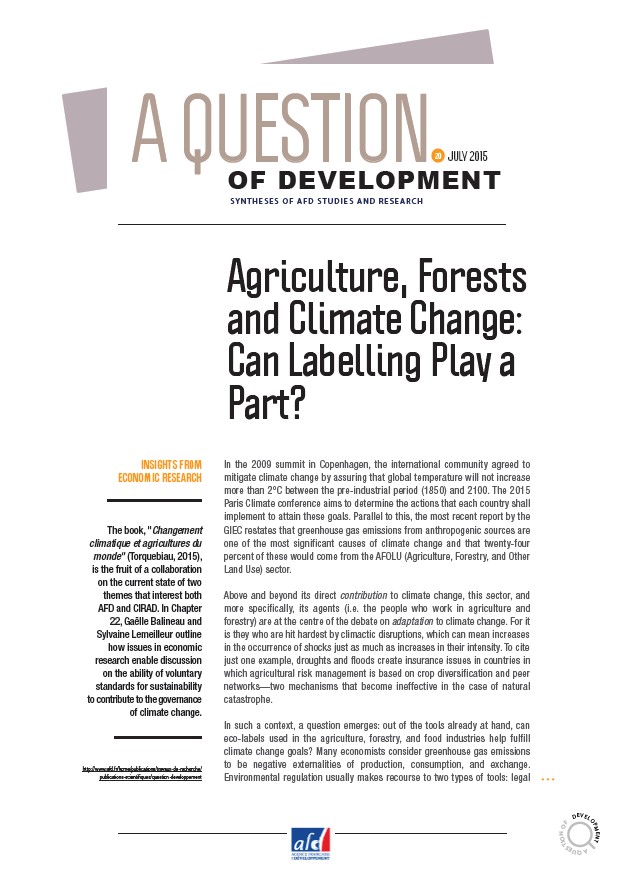
Agricultural Credit: Assessing the Use of Interest Rate Subsidies
Since the beginning of the 20th century, interest rate subsidies have been one of the tools used all around the world for developing agriculture, especially by major agricultural countries such as Fra...
Publication
Published on

Cities in Climate Change Mitigation Policy
Based on an in-depth review of scientific and institutional literature, this document seeks to identify what urban measures contribute efficiently to low-carbon urban development. It focuses on the co...
Publication
Published on
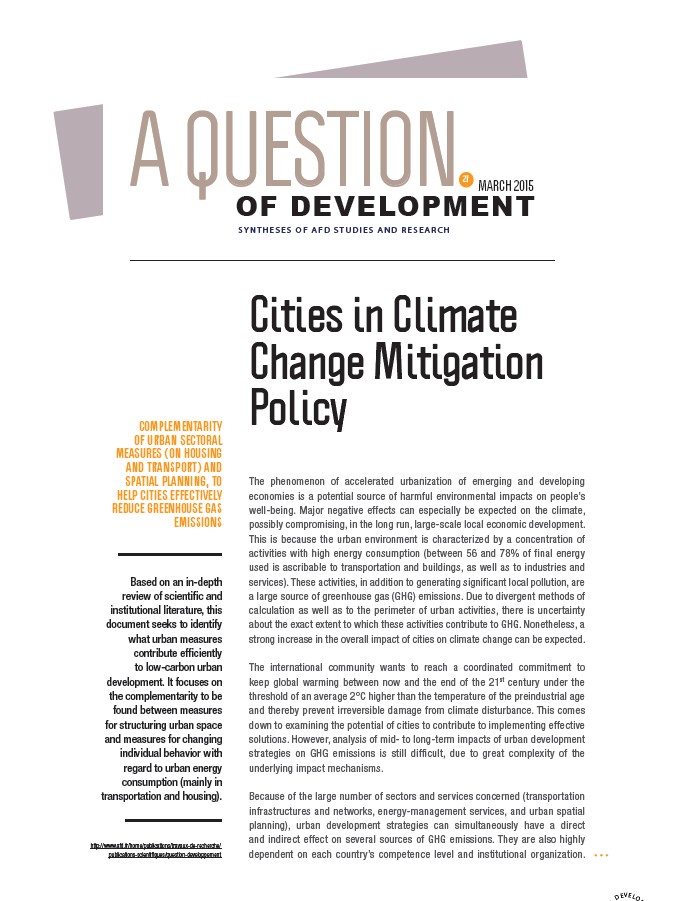
Facing Water Scarcity in the Mediterranean
Pressure on water resources has reached critical levels in many countries in the Mediterranean Basin. Sophisticated water mobilization strategies have been implemented but physical, financial and envi...
Publication
Published on
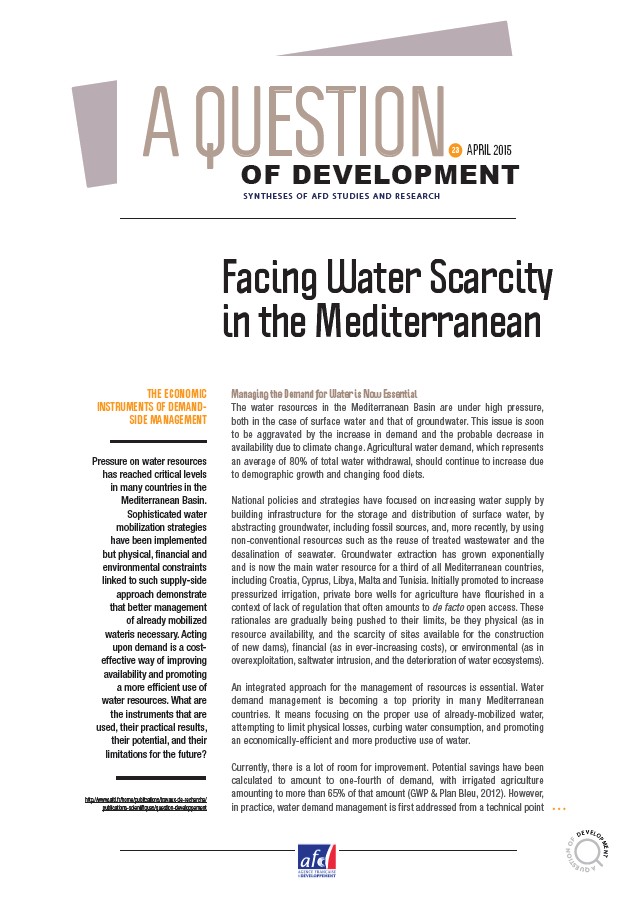
Overextraction of Groundwater Resources: What Are The Solutions?
The amount of water extracted from aquifers worldwide has increased threefold in the past fifty years, leading to an aggravated overdraft of these common resources. This “pumping race” brings about ma...
Publication
Published on
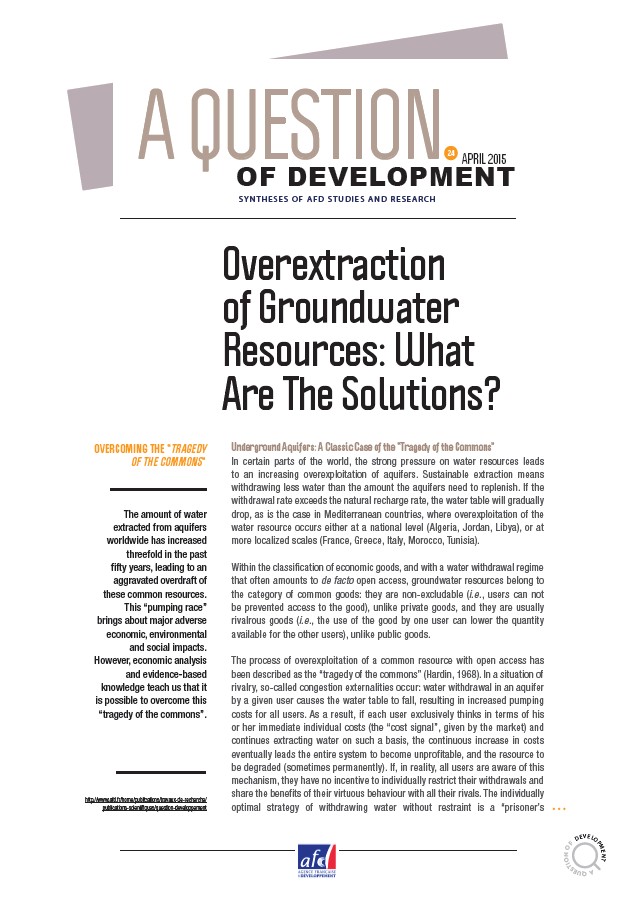
When Can Work Performed by Women Become a Factor in Their Empowerment? - Women‘s access to quality employment ...
The employment of women in Morocco, Tunisia and Turkey is not necessarily equated with financial, social and/or political empowerment. Though the three countries share striking similarities as regards...
Publication
Published on
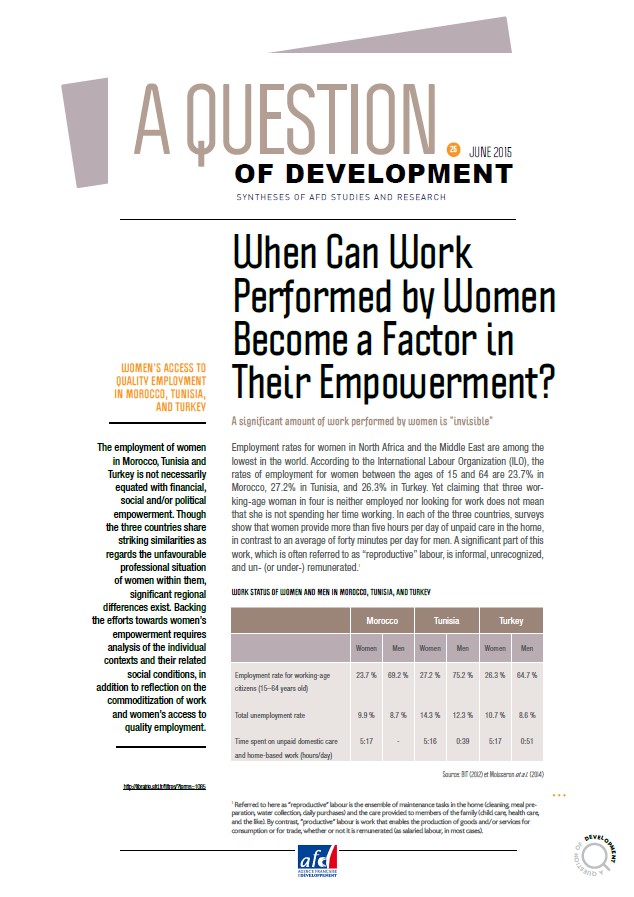
Sub-Saharan Africa's significant changes in food consumption patterns
Self-produced food amounts to less than half of the total food that people consume, and the provision of food is therefore largely reliant on market supply, in urban and rural areas alike; domestic fo...
Publication
Published on
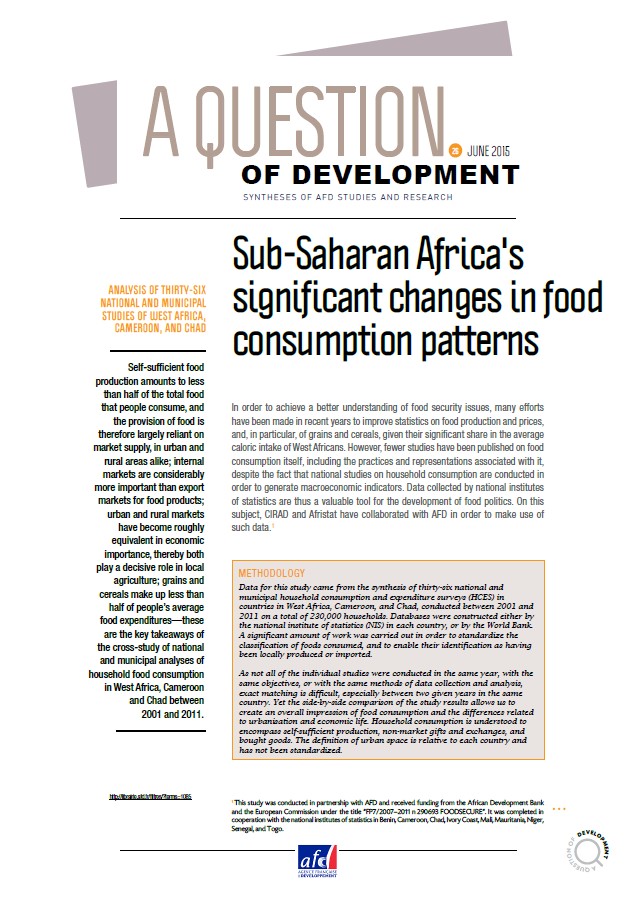
Nigeria: The Restrained Ambitions of Africa‘s Largest Economy
With 180 million inhabitants, Nigeria is the most populous country in Africa. Its economy is also the strongest. Just twice as large as France in size, its people are also very diverse: more than 250...
Publication
Published on
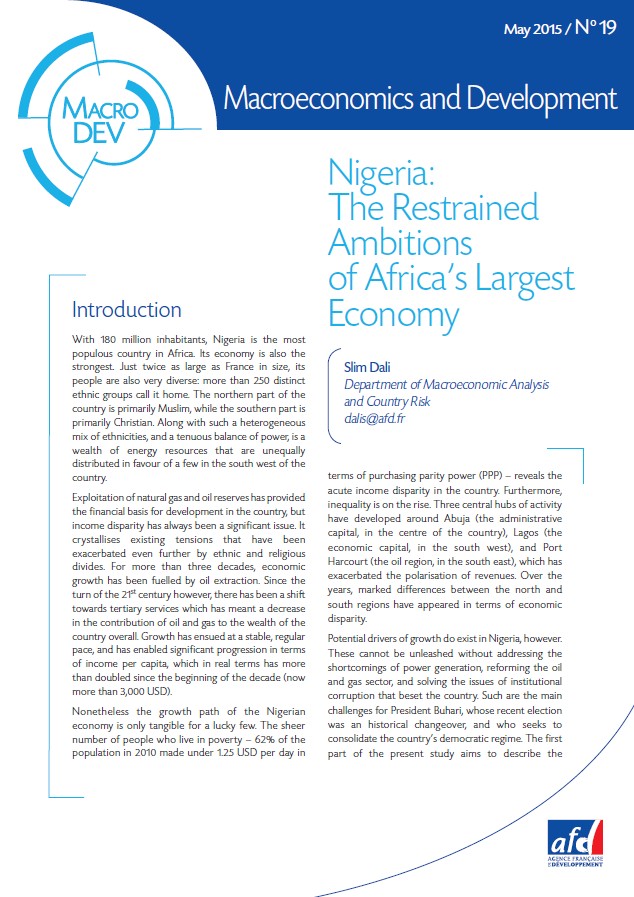
Vulnerabilities to climate change in the French overseas territories and small island states
The Physical Vulnerability to Climate Change Index (PVCCI) measures the vulnerability of small island territories to the impacts of climate change, whether periodic (cyclones, droughts) or progressive...
Publication
Published on
World Development Report - WDR 2015 - Progress and Limits
The innovative World Bank Report Mind, Society, and Behavior (WDR 2015) offers great prospects, focusing on the way in which human beings act according to the meaning they give to situations in which...
Publication
Published on
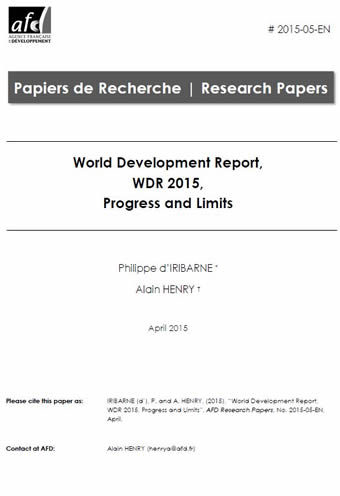
Are the Cities of Sub-Saharan Africa so Dependent on Food Imports?
Prevalent in discussions of food provision issues in Western and Central Africa is the idea that urban centres in Western and Central Africa are dependent on food imports, and that urbanization is acc...
Publication
Published on
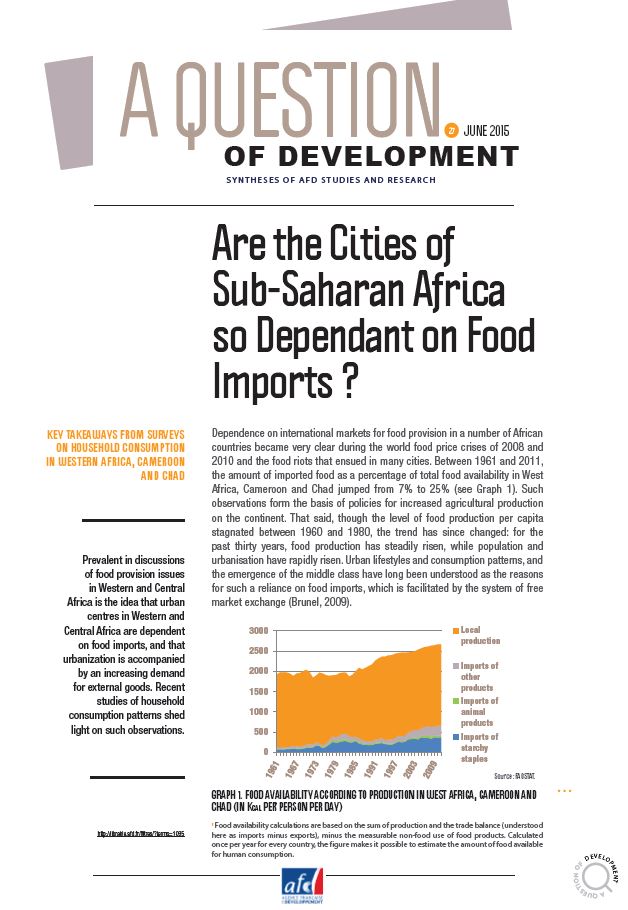
Sahelian youth: dynamics of exclusion, means of integration
For twenty years now, the Sahel region has been marked by rising insecurity, political crises, and poorly controlled flows of people, arms and illegal goods, with a major risk of States becoming desta...
Publication
Published on
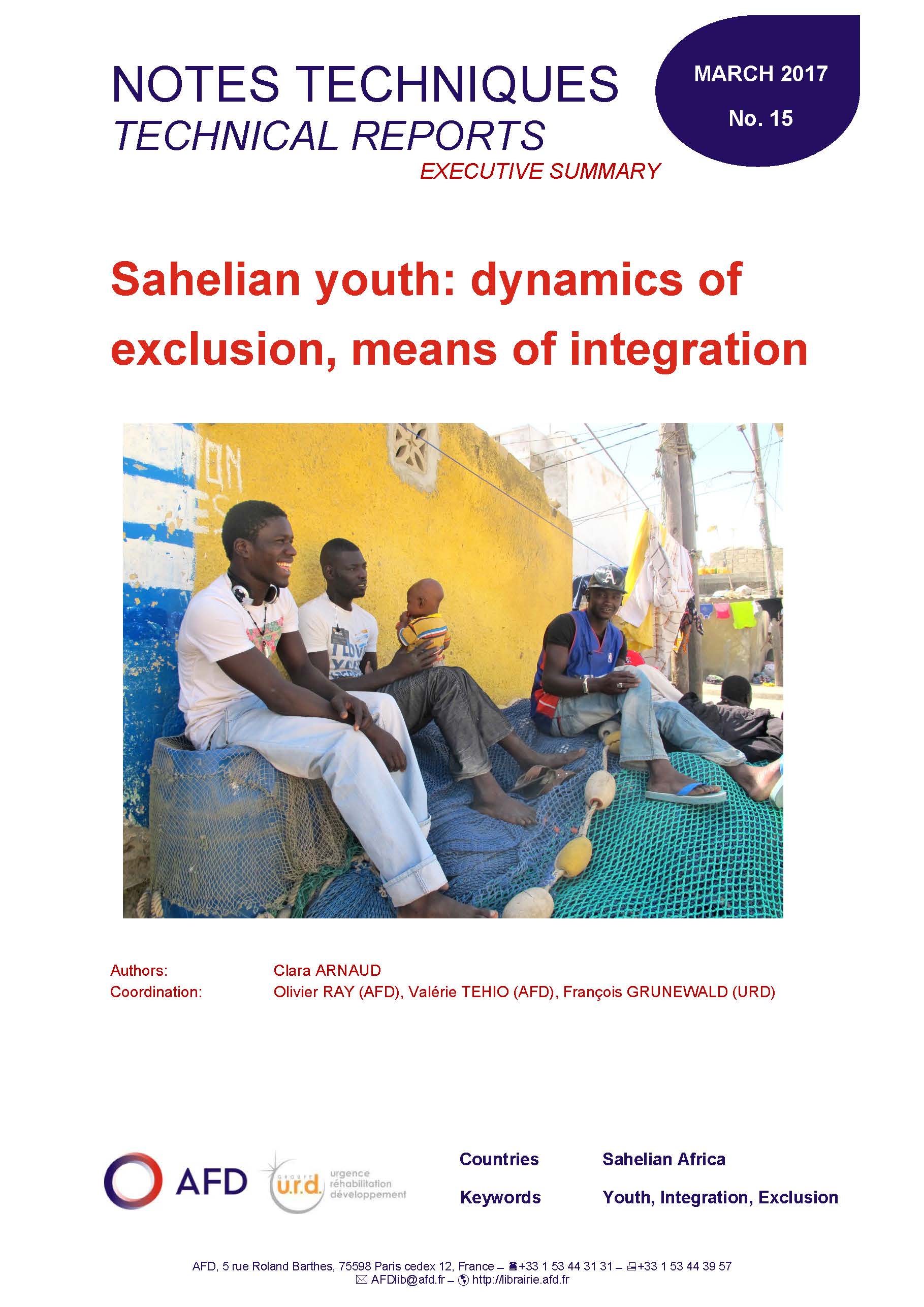
Safety Nets in Africa : Effective Mechanisms to Reach the Poor and Most Vulnerable
The need for safety nets in Sub-Saharan Africa is vast. In addition to being the world‘s poorest region, Sub-Saharan Africa is also one of the most unequal. In this context, redistribution must be see...
Publication
Published on
